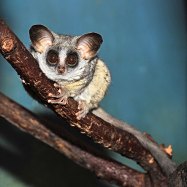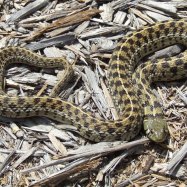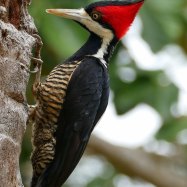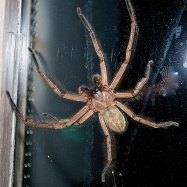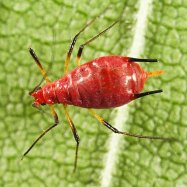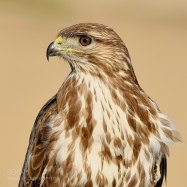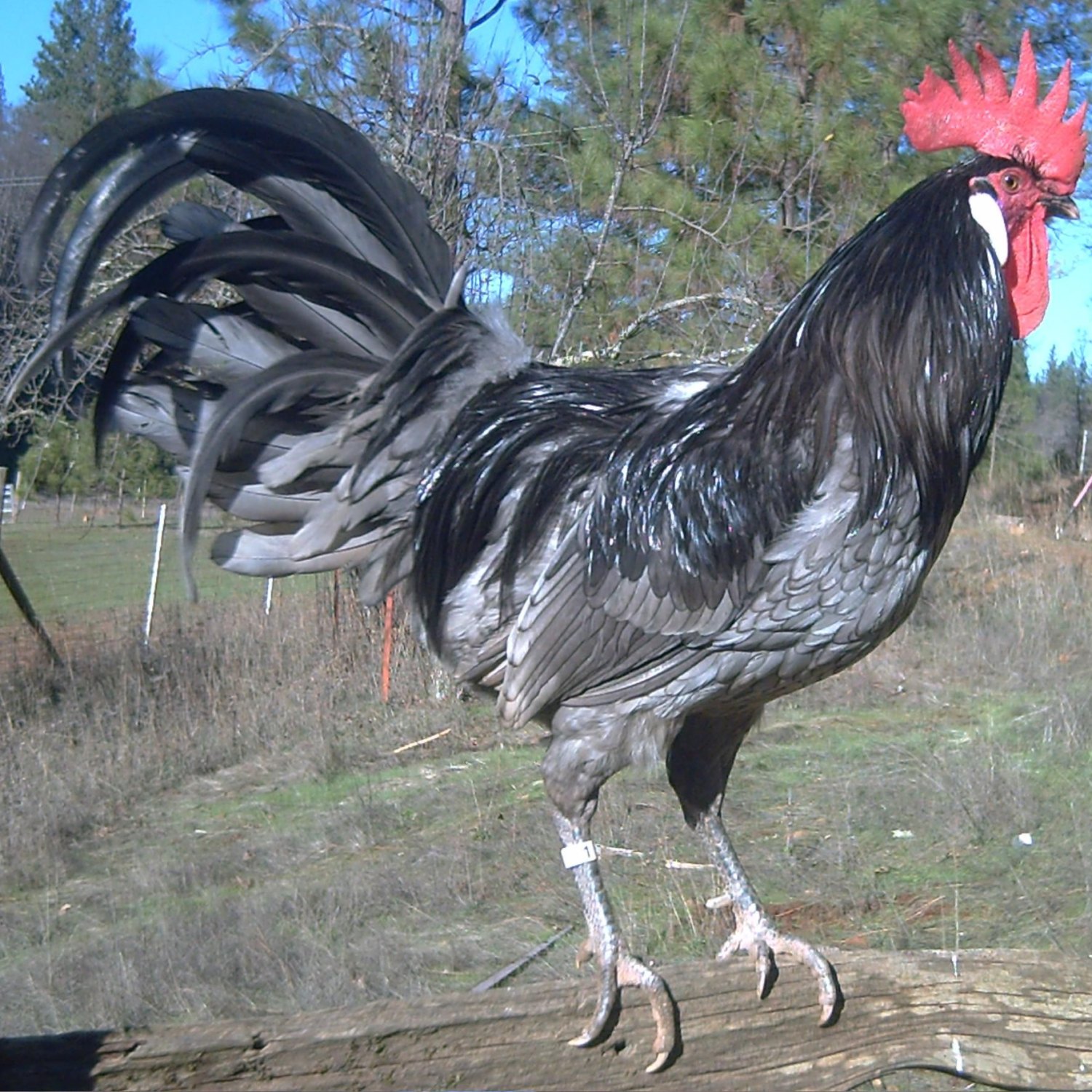
Blue Andalusian
15-20 inches
Blue Andalusian, also known as the Spanish blues, are medium-sized chickens that are popular for their striking silvery-blue feathers. They originated in Europe and belong to the Phasianidae family. These stylish birds grow to about 15-20 inches and make great pets, laying around 180-200 eggs per year. With their unique color and friendly nature, Blue Andalusians are a charming addition to any flock. #Animals #BlueAndalusian #Chickens #PetBirds #Europe
Animal Details Summary:
Common Name: Blue Andalusian
Kingdom: Animalia
Habitat: Farms, backyards
A Closer Look at the Blue Andalusian Chicken: The Stunning Gem of Farms
When one thinks of chickens, the image of a plump, white bird comes to mind. However, there is one breed that stands out among the rest with its striking blue coloration and elegant body shape - the Blue Andalusian chicken. Often described as a "living jewel," this rare breed is a sight to behold and has captivated chicken enthusiasts all around the world. In this article, we will take a closer look at the Blue Andalusian chicken and uncover the fascinating facts about this beautiful bird Blue Andalusian.The Scientific Name and Origin of the Blue Andalusian Chicken
The scientific name for the Blue Andalusian chicken is Gallus gallus domesticus. It belongs to the Animalia kingdom and the Chordata phylum. Being a bird, it is classified under the Aves class and Galliformes order. The Blue Andalusian chicken is a domesticated breed that falls under the Phasianidae family. Its country of origin is Spain, particularly the Andalusia region, which is where the breed gets its name from. However, it is now found worldwide, with Europe being its main location.A Coloration That Stands Out
The most distinct feature of the Blue Andalusian chicken is, of course, its blue coloration. It is believed that this breed's unique plumage resulted from genetic mutations from the black and white Andalusian breeds. The feathers of the Blue Andalusian chicken come in different shades of blue, ranging from a light grayish-blue to a deep, dark blue, making it a true sight to behold Belgian Malinois Mix.The blue color is not the only thing that makes this breed stand out. Its feathers have a metallic sheen that reflects the light, giving off a glittery effect. This characteristic is known as "lacing," where the tips of the feathers have a contrasting color from the rest of the feather. In this case, the lacing is usually black, creating a striking contrast against the blue.
A Medium-Sized Beauty
Apart from its vibrant color, the Blue Andalusian chicken is also admired for its elegant and well-proportioned body shape. It is a medium-sized chicken, measuring between 15 to 20 inches in length. Its body is slender and athletic, with a long, graceful neck and a small head topped with a single comb. This breed also has long, slender legs with blue-gray shanks, adding to its overall majestic appearance.A Versatile Feeder
Like most chicken breeds, the Blue Andalusian chicken is omnivorous, meaning it eats both plants and animals. This breed is known to have a healthy appetite and can be fed a variety of foods. Its diet usually consists of grains, seeds, vegetables, and insects. In backyard farms, this breed is a beneficial addition as it can help control pests and weeds, making it a win-win situation for both the chickens and their owners.A Farm and Backyard Favorite
As mentioned earlier, the Blue Andalusian chicken is a domesticated breed and can be found in farms and backyards around the world. It is a dual-purpose bird, meaning it is raised for both its meat and eggs. In terms of egg production, this breed is known to lay around 200 large white eggs annually, making it a favorite among small-scale farmers.Aside from its practical uses, the Blue Andalusian chicken is also a popular show bird due to its striking appearance. It has been exhibited in various poultry shows and has gained quite the following among chicken enthusiasts.
A Raising Challenge for Farmers
While the Blue Andalusian chicken is a beautiful bird, its striking appearance comes at a cost for farmers. Due to the breed's genetic makeup, it can be tricky to breed and maintain a consistent blue color. Breeding two Blue Andalusians can result in "sports," meaning chicks with either black or white feathers, which is undesirable for breeders. This challenge adds to the breed's rarity, making it a sought-after breed for many poultry farmers.A Hardy and Low-Maintenance Breed
Despite its delicate appearance, the Blue Andalusian chicken is a sturdy and low-maintenance breed. It can adapt well to different environments and is relatively resistant to disease and common poultry illnesses. This breed flourishes in free-range conditions, where it can roam and forage for food, thus making it an ideal breed for backyard farmers.An Endangered Breed
Despite its popularity and unique qualities, the Blue Andalusian chicken is considered an endangered breed. With the rise of industrial farming and the demand for mass-produced chicken meat and eggs, this breed is often overlooked in favor of more commercially viable breeds. This neglect has led to a decline in the Blue Andalusian population, making it a rare gem among chicken breeds.A Stunning Addition to Any Flock
In conclusion, the Blue Andalusian chicken is a breed that deserves more recognition and conservation efforts. Its blue coloration and elegant body shape make it a true standout among chicken breeds. It is a useful and low-maintenance addition to any farm or backyard flock and will surely captivate anyone who has the pleasure of seeing it. So, the next time you see a Blue Andalusian chicken, take a moment to appreciate its beauty and the uniqueness it brings to the world of poultry farming.

Blue Andalusian
Animal Details Blue Andalusian - Scientific Name: Gallus gallus domesticus
- Category: Animals B
- Scientific Name: Gallus gallus domesticus
- Common Name: Blue Andalusian
- Kingdom: Animalia
- Phylum: Chordata
- Class: Aves
- Order: Galliformes
- Family: Phasianidae
- Habitat: Farms, backyards
- Feeding Method: Omnivorous
- Geographical Distribution: Worldwide
- Country of Origin: Spain
- Location: Europe
- Animal Coloration: Blue
- Body Shape: Medium-sized
- Length: 15-20 inches
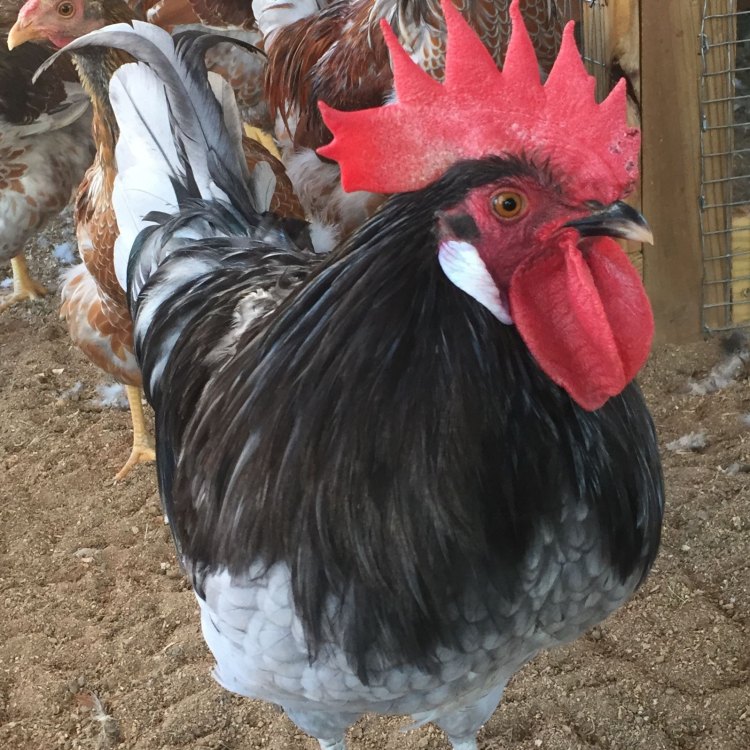
Blue Andalusian
- Adult Size: Medium
- Average Lifespan: 5-8 years
- Reproduction: Sexual
- Reproductive Behavior: Monogamous
- Sound or Call: Loud crowing
- Migration Pattern: Non-migratory
- Social Groups: Flock
- Behavior: Active during the day
- Threats: Predation, disease
- Conservation Status: Not evaluated
- Impact on Ecosystem: Seed dispersal
- Human Use: Eggs, meat
- Distinctive Features: Slate-blue plumage, white skin
- Interesting Facts: They are excellent egg layers
- Predator: Foxes, raccoons, birds of prey
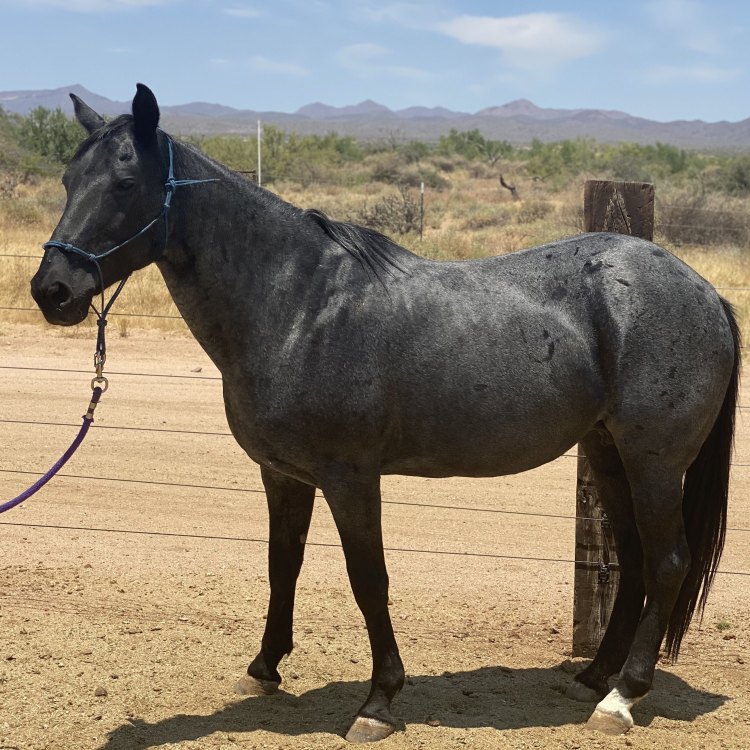
Gallus gallus domesticus
The Beautiful Blue Andalusian: A Unique Chicken Breed
When most people think of chickens, they imagine the traditional white or brown-feathered birds that roam around farms. However, there is one chicken breed that stands out among the rest with its striking blue plumage and distinctive appearance - the Blue Andalusian.The Blue Andalusian, also known as the Spanish Blue, is a medium-sized chicken breed that originated in Andalusia, Spain. It is a breed that has been around for centuries, and it has captured the hearts of many chicken enthusiasts with its captivating and unique features PeaceOfAnimals.Com.
In this article, we will dive deeper into the fascinating world of Blue Andalusian chickens and discover what makes them stand out from the rest.
Size and Lifespan
Blue Andalusian chickens are considered to be a medium-sized breed, with males weighing around 6-7 pounds and females weighing slightly less at 5-6 pounds. They have a slender built and long legs, which make them perfect for foraging and running around freely.On average, Blue Andalusian chickens have a lifespan of 5-8 years. Of course, proper care and nutrition can prolong their lives, but these chickens are known to have a shorter lifespan compared to other domesticated chicken breeds.
Reproduction and Behavior
Like most chickens, Blue Andalusian chickens reproduce sexually. This means that fertilization occurs when a rooster mates with a hen. What sets them apart from other chicken breeds is their reproductive behavior.Blue Andalusian chickens are known to be monogamous birds Bloodhound. This means that they form a pair with one rooster and one hen and stay faithful to each other throughout their lifetime. This is a rare behavior in the animal kingdom, making these chickens even more unique.
Sound and Migration
One distinctive feature of the Blue Andalusian is their loud crowing. The roosters of this breed are known to have a powerful and unique crow, which can be heard from a distance. This loud call is not only used for communication between members of the flock but also serves as a warning to potential predators.Unlike some bird species, Blue Andalusian chickens are non-migratory. This means that they do not travel long distances during certain times of the year. Instead, they stay in their designated territory, which is typically a farm or backyard setting.
Social Behavior and Threats
Blue Andalusian chickens are known to be social birds and thrive in a flock environment. They form strong bonds with their fellow chickens and enjoy foraging and playing together during the day.However, like any other animal, they do face threats from predators, such as foxes, raccoons, and birds of prey. It is essential to provide proper protection for these birds, especially if they are free-roaming in a backyard setting.
Another threat that these chickens face is disease. It is crucial to keep their coops clean and provide them with a healthy and balanced diet to prevent any illnesses.
Conservation Status and Impact on Ecosystem
According to the International Union for Conservation of Nature (IUCN), the Blue Andalusian chicken breed has not been evaluated for their conservation status. However, just like any other animal or plant species, their existence plays a vital role in the ecosystem.One of the significant contributions of Blue Andalusian chickens to the ecosystem is seed dispersal. These chickens have a habit of pecking at seeds and plants, and as they move around, they help spread these seeds, aiding in the development and growth of plants in the environment.
Human Use and Distinctive Features
One of the main uses of Blue Andalusian chickens is for their eggs and meat. These birds are excellent egg layers, producing around 200-280 eggs per year. They are also known for their flavorful meat, making them a popular choice among farmers for their dual-purpose capabilities.However, the primary reason why these chickens are popular is their distinctive features. The most striking of these is their slate-blue plumage, which gives them a regal and elegant appearance. Their feathers are shiny and can appear almost metallic in certain lighting.
Another unique feature of Blue Andalusian chickens is their white skin. Unlike most chickens, they do not have a yellowish tinge to their skin, making them stand out even more.
Interesting Facts about Blue Andalusian Chickens
Apart from their distinctive features, there are many interesting facts about Blue Andalusian chickens that make them even more intriguing. Here are a few fascinating facts about this breed:- Blue Andalusian chickens were commonly used in Spain for cockfighting due to their strong and athletic build.
- These chickens are great escape artists and can quickly fly over fences, so it is essential to give them plenty of space or keep them in an enclosed area.
- Blue Andalusian chickens come in three different color varieties - blue, black, and splash. The blue is the most common, followed by the black and splash.
- They are generally active during the day and prefer to roost at night, making them easy to care for and handle.
In Conclusion
The Blue Andalusian chicken breed is undoubtedly a unique and fascinating bird. From their striking appearance to their monogamous mating behavior, these birds have captured the hearts of many chicken enthusiasts worldwide.Not only are they a beautiful addition to any backyard, but they also have a crucial role in the ecosystem, contributing to seed dispersal. So next time you see a Blue Andalusian chicken, take a moment to appreciate their uniqueness and impressive features.
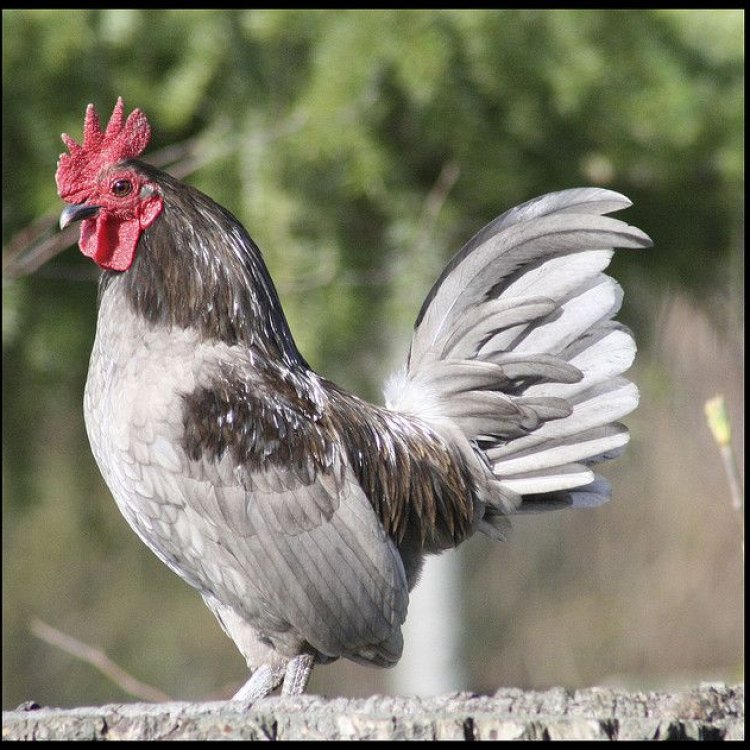
A Closer Look at the Blue Andalusian Chicken: The Stunning Gem of Farms
Disclaimer: The content provided is for informational purposes only. We cannot guarantee the accuracy of the information on this page 100%. All information provided here may change without prior notice.





